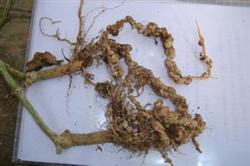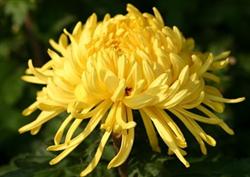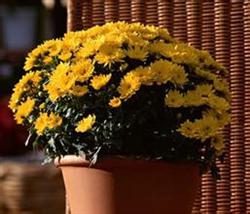Control of leaf blight nematode disease in chrysanthemum

Chrysanthemum leaf blight nematode is one of the most important diseases of chrysanthemum. It is distributed all over the world and occurs in Shanghai, Nanjing, Hefei, Guangzhou, Changsha, Kunming, Zhejiang and other places in China. It mainly harms the leaves of chrysanthemum, causing the leaves to turn yellow and fall early. The nematode not only harms chrysanthemum, but also harms many kinds of Compositae plants, such as chrysanthemum, golden chrysanthemum, dahlia, hundred-day grass, as well as flowers such as pearl orchid, lily, bouquet, swallow grass, oleander and so on. Symptom: the nematode mainly harms leaves and can also infect flower buds and flowers. In general, the lower leaves of the plant are the first to suffer. The leaves infected by nematodes turn brown quickly at the point of invasion. After that, the brown spot gradually enlarged, and the polygonal or irregular brown spot was formed due to the limitation of leaf veins. Finally, the leaves curled, withered and drooped, resulting in a large number of fallen leaves. After the flower organ is infected, the flower does not develop, even if it blossoms, it also grows small and deformed. Flower buds and buds are dry or degenerated, and some flower buds are dilated and cannot form buds. The seriously diseased plants withered before flowering. Pathogen: the pathogen is chrysanthemum mosaic nematode (Apholonchoides ritsomabsi), which belongs to the genus nematode. Disease regularity: pathogenic nematodes overwintered on diseased plants, diseased bodies and wild host plants such as chicory to buy vegetables, wisps, delphinus, etc., generally spread through Rain Water and irrigation water, and drilled into the tissue from leaf stomata. The whole development cycle is completed in the injured tissue. Nematodes can reproduce all year round as long as the temperature and humidity are appropriate. Prevention and treatment: ① strengthens quarantine to prevent diseased seedlings, diseased plants and their breeding materials from entering disease-free areas. ② chose healthy and disease-free cuttings as breeding material. Because the leaf blight nematode does not infringe on the apical bud of the stem, the apical bud can be used as propagation material. ③ should disinfect gardening tools that have come into contact with diseased seedlings and diseased soil in time. Disinfect the soil and flowerpots that have planted diseased plants. When ④ is cultivated in open field, the splash of watering should be prevented, the diseased plants should be pulled out and burned in time, and the chance of transmission should be reduced. ⑤ uses 3% carbofuran granules for acupoint application, 45-75 kg per hectare, which has a certain curative effect.
- Prev

How to make chrysanthemums blossom all the year round
Chrysanthemums, except summer chrysanthemums, are short-day plants. If chrysanthemums are to bloom all year round, they can form flower buds and bloom as long as they are properly shaded and given less than 10 hours of light every day for 60-70 days in a row. 1. May Day blossoms. Keep 3-5 strong buds of autumn chrysanthemum in indoor maintenance, after mid-January.
- Next

The best choice for health, chrysanthemum.
Potted chrysanthemums are often harmed by ants, which cause poor growth of the whole plant and slow death of the plant. The methods of disposal are introduced as follows: first, when planting chrysanthemums, put two or three pieces of dried orange peel at the bottom of the basin, or crush the orange peel and mix the soil into a basin, and then plant chrysanthemums. Second, in the growing season of chrysanthemum.
Related
- Fuxing push coffee new agricultural production and marketing class: lack of small-scale processing plants
- Jujube rice field leisure farm deep ploughing Yilan for five years to create a space for organic food and play
- Nongyu Farm-A trial of organic papaya for brave women with advanced technology
- Four points for attention in the prevention and control of diseases and insect pests of edible fungi
- How to add nutrient solution to Edible Fungi
- Is there any good way to control edible fungus mites?
- Open Inoculation Technology of Edible Fungi
- Is there any clever way to use fertilizer for edible fungus in winter?
- What agents are used to kill the pathogens of edible fungi in the mushroom shed?
- Rapid drying of Edible Fungi

